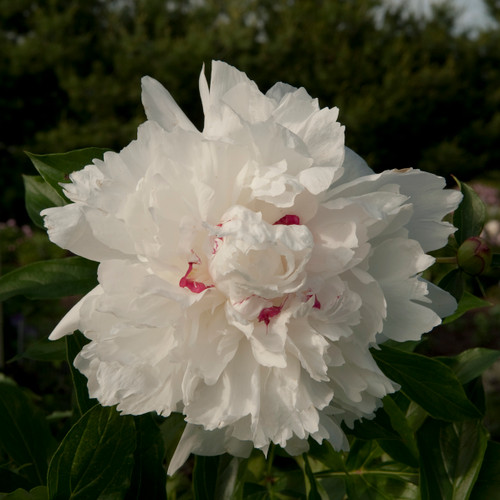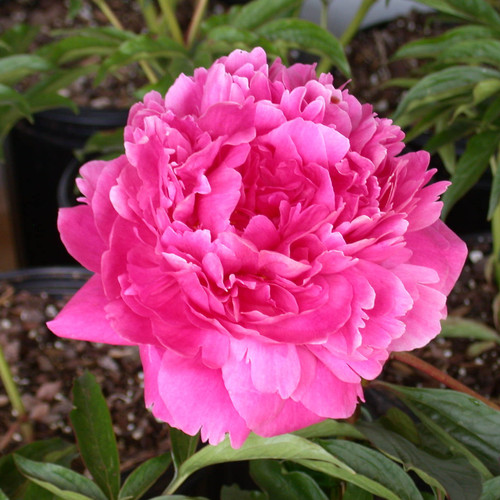Paeonia 'Festiva Maxima' - Peony Roots
Noticeably fragrant, white blooms with red drizzled throughout the center is the highlight of this reliable bloomer. The flowers have a massive, loose form. This popular double is one of the most widely available peonies in cultivation today. It blooms in late spring.
When should I plant garden peony roots?
Fall is the best time to plant garden peony roots. This gives the roots ample time to establish before winter and prepare for stunning spring blooms.
Peonies are classic garden plants that add a bit of nostalgia and charm to the garden. Their fragrant blooms and lush foliage have made them popular for years, and with the recent resurgence in breeding, they will continue to improve. Peonies are simple to grow and can be utilized in many ways, including mass plantings, specimens, or hedges. By choosing a mixture of early, midseason, and late blooming varieties, you can have blooms for up to 6 weeks.
Peonies thrive in locations with full sun (at least 6 hours of direct sunlight daily) and well-draining soil. Avoid areas where water tends to pool, as peonies do not tolerate wet feet. Here's what to consider when selecting a site:
- Sunlight: Full sun is ideal, but peonies can tolerate light shade, especially in hotter climates.
- Soil: Well-draining soil is crucial. If your soil is heavy clay, amend it with compost or sand to improve drainage.
- Spacing: Space peony plants about 3-4 feet apart to allow for air circulation and room to grow.
Planting Peony Roots
Follow these steps to plant peony roots in the fall:
- Dig the Hole: Dig about 12-18 inches deep and wide to accommodate the root system.
- Amend the Soil: Mix the excavated soil with compost to enrich it.
- Plant the Root: Place the peony root in the hole with the eyes facing upward. The eyes should be 1-2 inches below the soil surface. Planting too deep can prevent blooming.
- Backfill: Fill the hole with the amended soil, gently firming it around the root.
- Water: Thoroughly water the newly planted root to settle the soil and eliminate air pockets.
- Mulch: Apply a light layer of mulch to help retain moisture and regulate soil temperature, but avoid covering the eyes.
Caring for Fall-Planted Peonies
Proper care after planting is crucial to ensure your peonies thrive. Here are some tips for post-planting care:
- Watering: Keep the soil consistently moist but not waterlogged. Reduce watering as the temperatures drop.
- Mulching: Maintain a light layer of mulch to protect the roots during winter. Remove excess mulch in early spring to prevent rot.
- Fertilizing: Avoid fertilizing newly planted peonies in the fall. Wait until spring and use a balanced fertilizer once growth begins.
- Protection: In areas with harsh winters, consider covering the planting site with a thicker layer of mulch or straw to protect against freezing.




